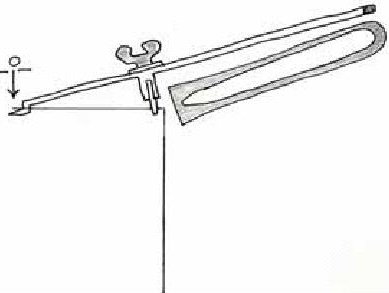William Lyman (inventor) on:
[Wikipedia]
[Google]
[Amazon]
William Worcester Lyman (March 29, 1821 – November 15, 1891) was an American inventor from  Lyman was a dedicated inventor, and was awarded several US patents. The most famous is his rotating wheel can opener, invented in 1870. Whereas previous can openers were basically variations of a knife, Lyman's design was the first attempt to facilitate the procedure (see picture). The can was to be pierced in its center with the sharp metal rod of the opener. Then the length of the lever had to be adjusted to fit the can size, and the lever fixed with the wingnut. The top of the can was cut by pressing the cutting wheel into the can near the edge and rotating it along the can's rim. The need to pierce the can first was a nuisance, and this can opener design has not survived. In 1925, a modern-style opener, equipped with an additional serrated wheel, was invented to improve Lyman's design.
His other patents were dedicated to improvements to various household food utensils such as a refrigerating pitcher (1858), fruit can lids (1862), tea and coffee pots, and a butter-dish.William W Lyman ''Improved butter-dish'' July 28, 1868 As an example illustrating the nature of those improvements, Lyman's fruit can lid relied on the physical principle that hot food placed in a jar and then allowed to cool would suck down the lid, provided with an elastic rim inside, thereby sealing the can.
Lyman was a dedicated inventor, and was awarded several US patents. The most famous is his rotating wheel can opener, invented in 1870. Whereas previous can openers were basically variations of a knife, Lyman's design was the first attempt to facilitate the procedure (see picture). The can was to be pierced in its center with the sharp metal rod of the opener. Then the length of the lever had to be adjusted to fit the can size, and the lever fixed with the wingnut. The top of the can was cut by pressing the cutting wheel into the can near the edge and rotating it along the can's rim. The need to pierce the can first was a nuisance, and this can opener design has not survived. In 1925, a modern-style opener, equipped with an additional serrated wheel, was invented to improve Lyman's design.
His other patents were dedicated to improvements to various household food utensils such as a refrigerating pitcher (1858), fruit can lids (1862), tea and coffee pots, and a butter-dish.William W Lyman ''Improved butter-dish'' July 28, 1868 As an example illustrating the nature of those improvements, Lyman's fruit can lid relied on the physical principle that hot food placed in a jar and then allowed to cool would suck down the lid, provided with an elastic rim inside, thereby sealing the can.
Meriden, Connecticut
Meriden ( ) is a city in New Haven County, Connecticut, United States, located halfway between the regional cities of New Haven, Connecticut, New Haven and Hartford, Connecticut, Hartford. The city is part of the South Central Connecticut Planni ...
. He is credited with inventing the first rotating wheel can opener
A can opener (North American and Australian English) or tin opener (British English) is a mechanical device used to open metal tin cans. Although preservation of food using tin cans had been practiced since at least 1772 in the Netherlands, the ...
.
William Lyman was born in 1821 in Middlefield, Connecticut
Middlefield is a town in Middlesex County, Connecticut, United States. The town is part of the Lower Connecticut River Valley Planning Region. The population was 4,217 at the 2020 census. The town includes the village of Rockfall in the northe ...
. At the age of 15 he was apprenticed to the local company Griswold & Couch, located in Meriden, Connecticut, to learn pewter
Pewter () is a malleable metal alloy consisting of tin (85–99%), antimony (approximately 5–10%), copper (2%), bismuth, and sometimes silver. In the past, it was an alloy of tin and lead, but most modern pewter, in order to prevent lead poi ...
smithery, and worked there until 1844. After that, he continued working as a pewtersmith with various local companies until 1880. In 1849, he was appointed as State Representative in Meriden. On September 5, 1841 William married Roxanne Griswold Frary, a local woman one year older than he was. He died in Meriden in 1891 at the age of 70.
References
{{DEFAULTSORT:Lyman, William 1821 births 1891 deaths 19th-century American inventors People from Middlefield, Connecticut